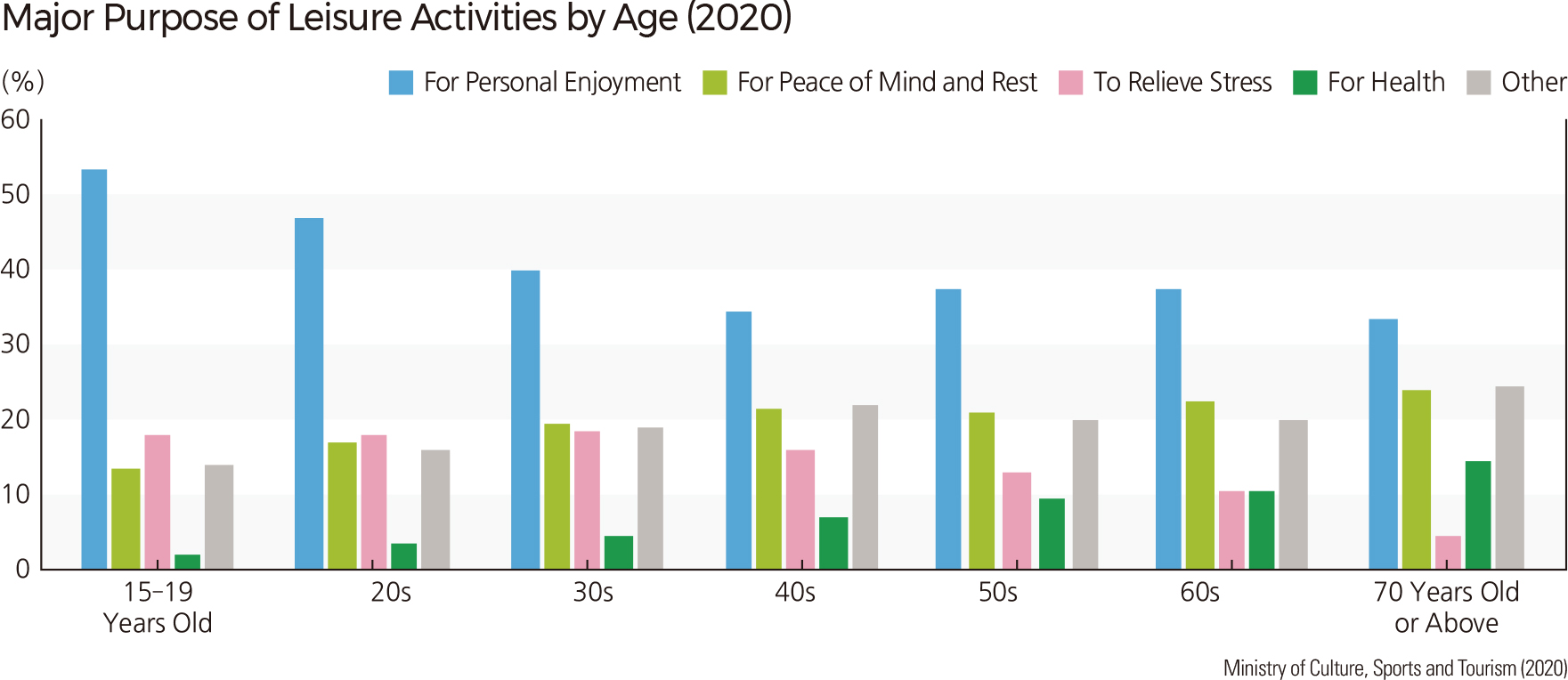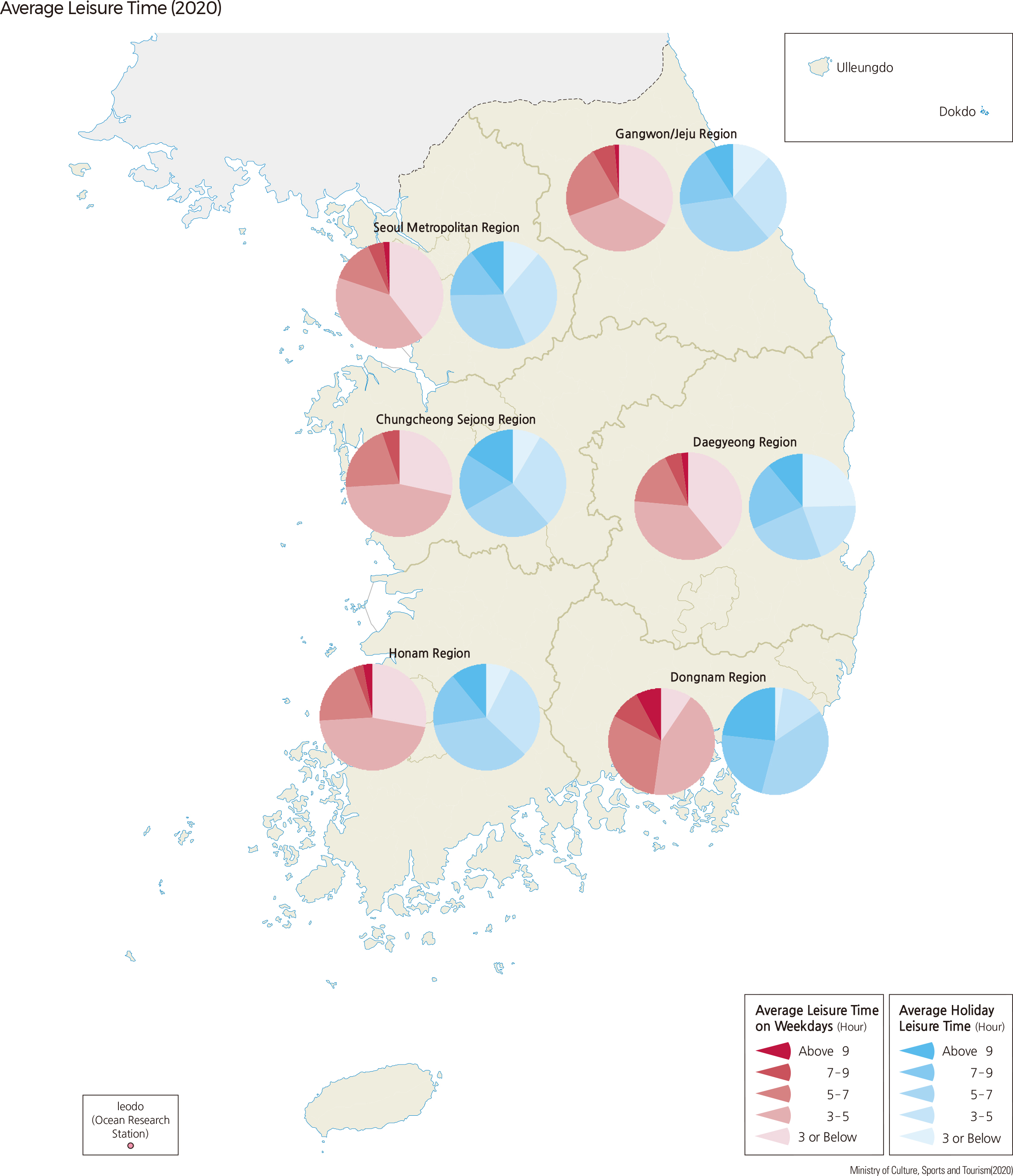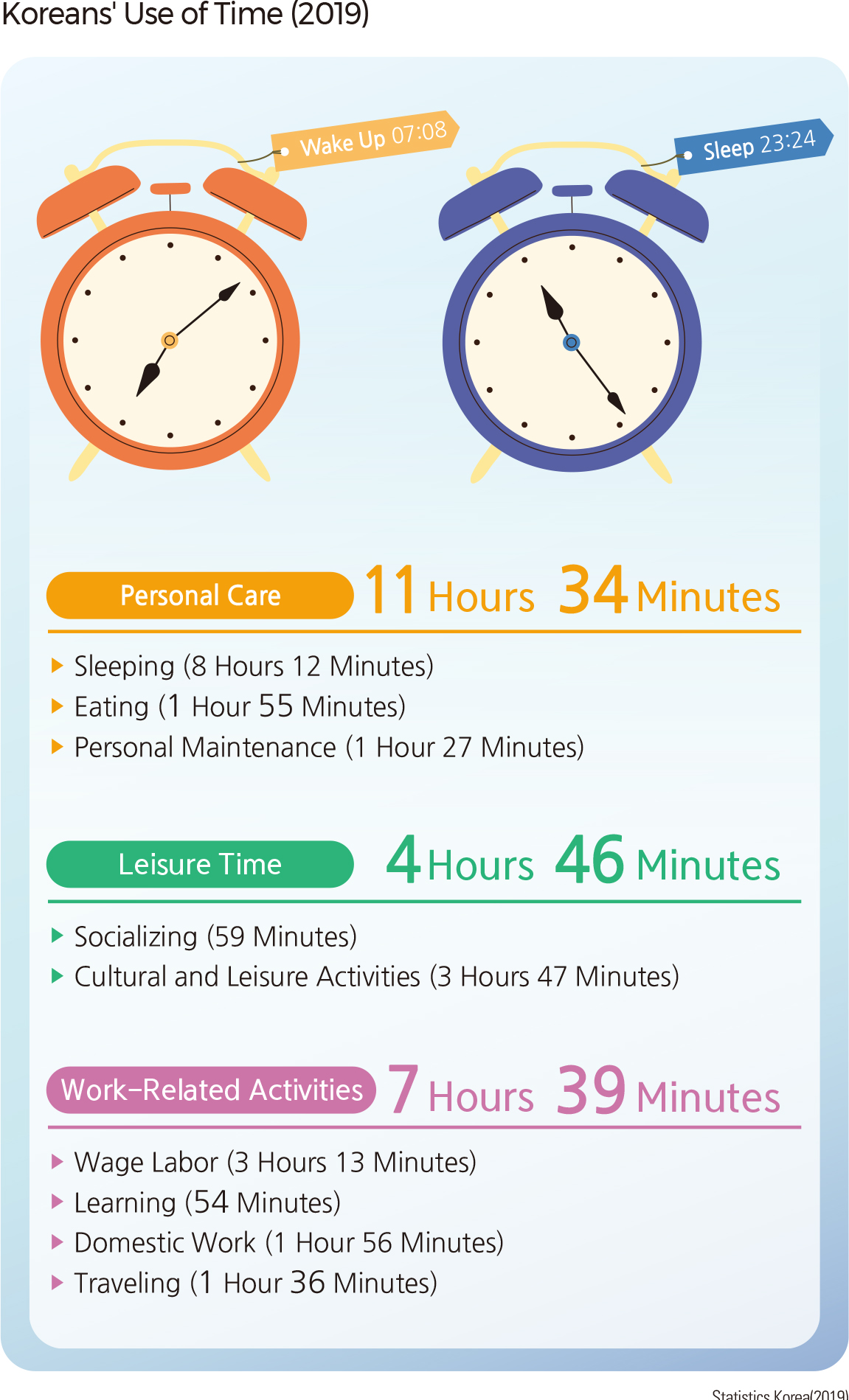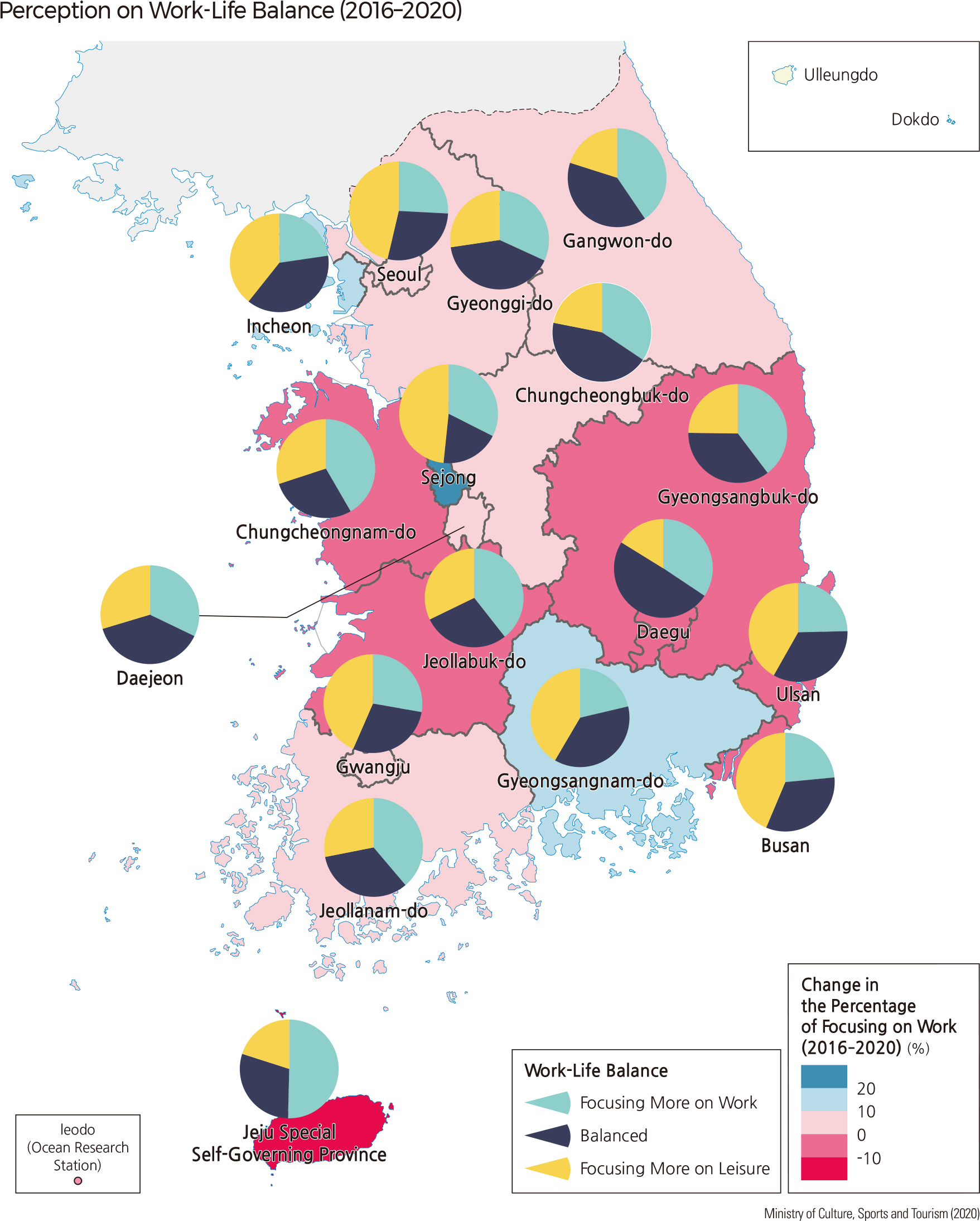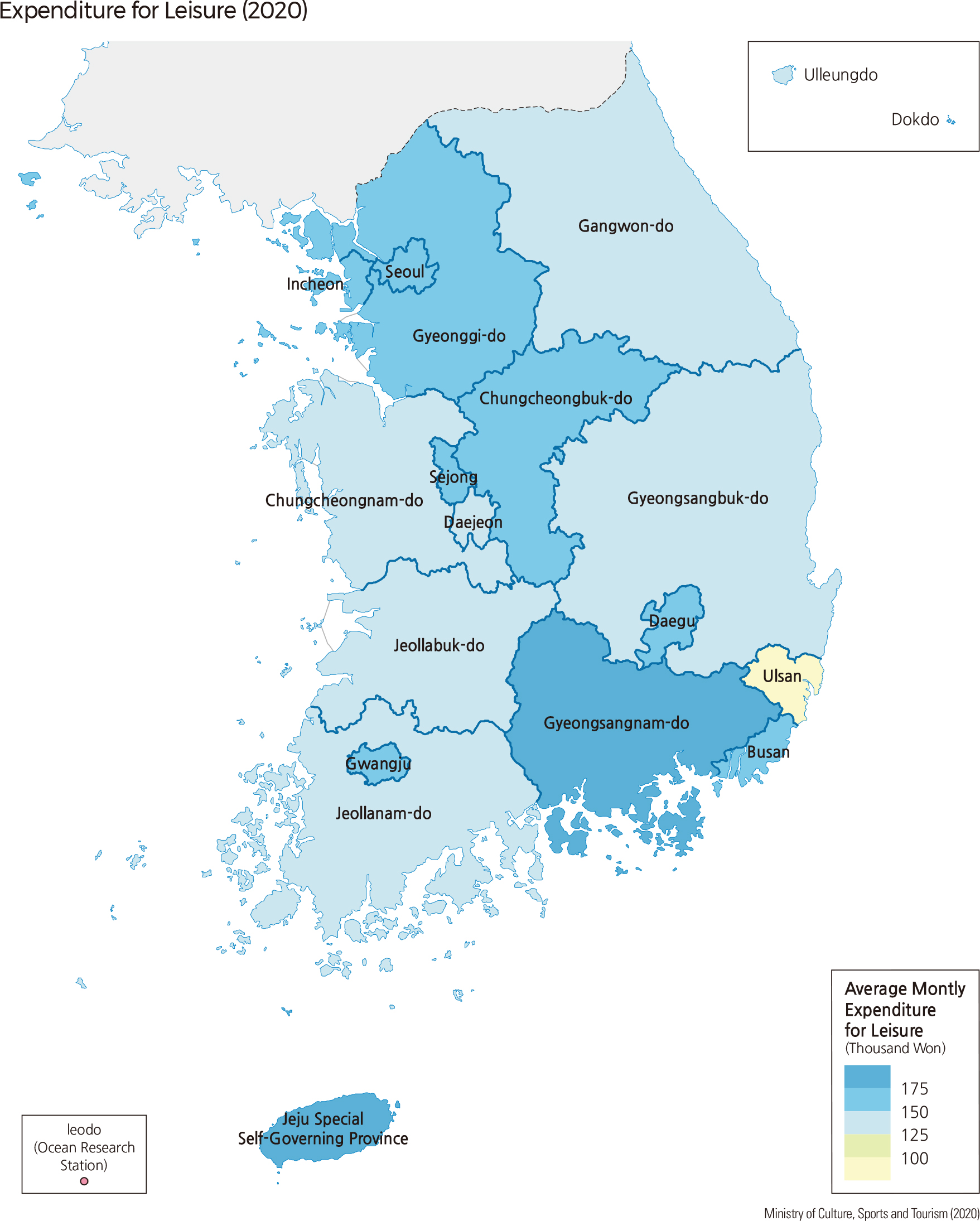English III 2021
The Koreans’ leisure time and activities have diversified after a five-day workweek was introduced in the early 2000s. Expenditures for leisure have increased along with income and a changing perception of leisure. As a result, opportunities to actively participate in leisure activities, such as joining clubs, have expanded, and so has the frequency and expense of domestic and international travel. The central and local governments also made a great effort to improve the Korean citizens’ quality of life through leisure participation. Governmental agencies enhanced public access to leisure by building and managing many leisure facilities such as concert halls, libraries, parks, public sports facilities, and village sports facilities. In addition, governmental agencies have built many walking tour routes and bicycle paths. They have developed websites and mobile applications to provide relevant information. Furthermore, each local government has provided shared bicycles and improved public transportation routes and facilities to enhance accessibility to leisure spaces. In recent years, Korean society has experienced social transitions, including religion and family life. As the fertility rate decreased, family size has also decreased. As the age of marriage has increased, and divorce has also increased. With the demographic and social changes, opinions on the family, marriage, and divorce have changed. In addition, various social conflicts such as ideological conflicts, the inequalities between the rich and the poor, and conflicts among different generations, religions, and regions are being addressed. Continuous societal efforts are being made to solve these conflicts and inequalities.
Koreans over age 10 enjoy an average of four hours and forty-five minutes of leisure time every day. The average Korean sleeps at 11:30 pm and wakes up around 7 am. Koreans generally engage in sedentary activities such as watching TV or using the Internet on weekdays and other leisure activities, like traveling and exercising, on weekends. The introduction of the five-day workweek has accelerated this pattern of leisure activities. Regionally, a higher percentage of people of Ulsan or Jeju-do show good work-life balance, and a larger proportion of people of Sejong shows work-oriented life. Regarding leisure expenditures in 2020, people spent 100,000 to 200,000 KRW per month: the highest in Jeju-do and Gyeongsangnam-do and the lowest in Gangwon-do and Ulsan.
Koreans enjoy leisure in movie theaters, spaces around the house and neighborhood parks for light exercise, and restaurants and cafes for gatherings and chats. In addition, they enjoy hiking on weekends. Also, regional differences in leisure space can be found. For example, movie theaters are often recognized as the primary space for leisure in urban areas. On the other hand, village community centers are the primary space for leisure in non-urban regions where the elderly population is dominant, including Chungcheongnam-do, Jeollanam-do, Jeollabuk-do, and Gyeongsangbuk-do. Regardless of gender, the primary purpose of leisure participation is for personal pleasure; a relatively lower proportion of Korean people participate in leisure for health, socializing, and personal development. Females are more likely than males to pursue emotional balance and rest in their leisure time. On the other hand, males are more likely to see leisure as an aim to relieve stress. Reflecting such purposes, males participate in hobbies, entertainment, and sports-related activities; females participate in relaxing, socializing, or culture and art-related activities. By age groups, the proportion of people participating in leisure activities increases for younger people in personal pleasure, relieving stress, and emotional stability and for older people in resting and health-related activities. Recently, the proportion to watch broadcasts with TVs and smartphones by using video-on-demand (VOD) services and leisure activities by using mobile devices also are emerging. |

